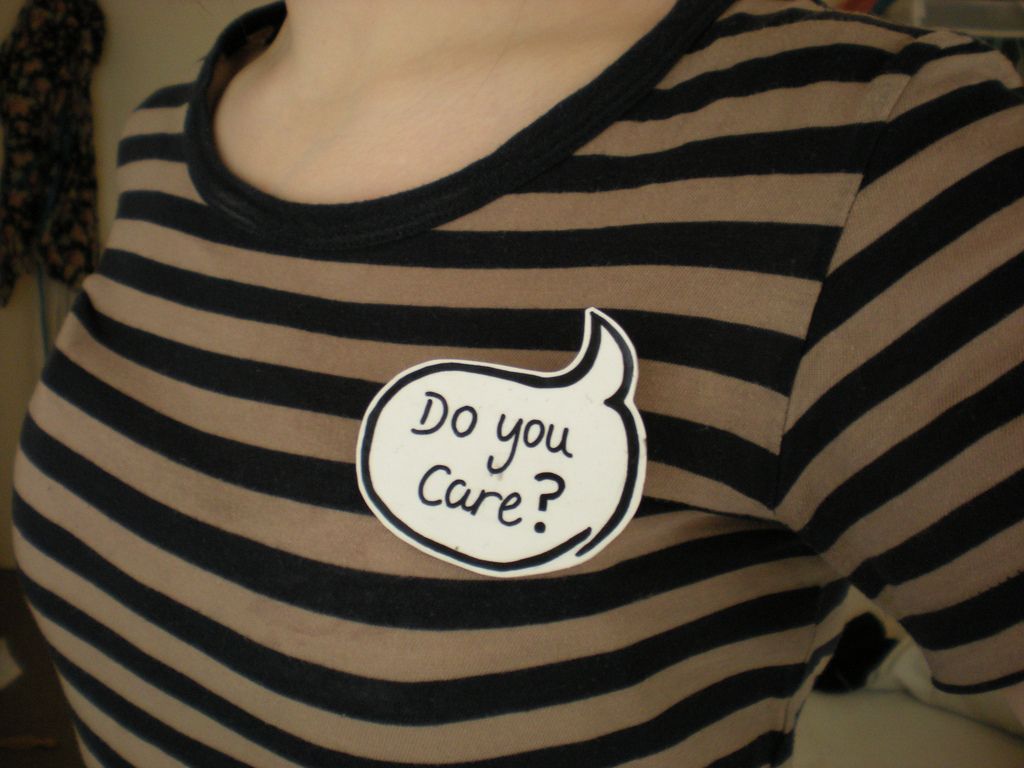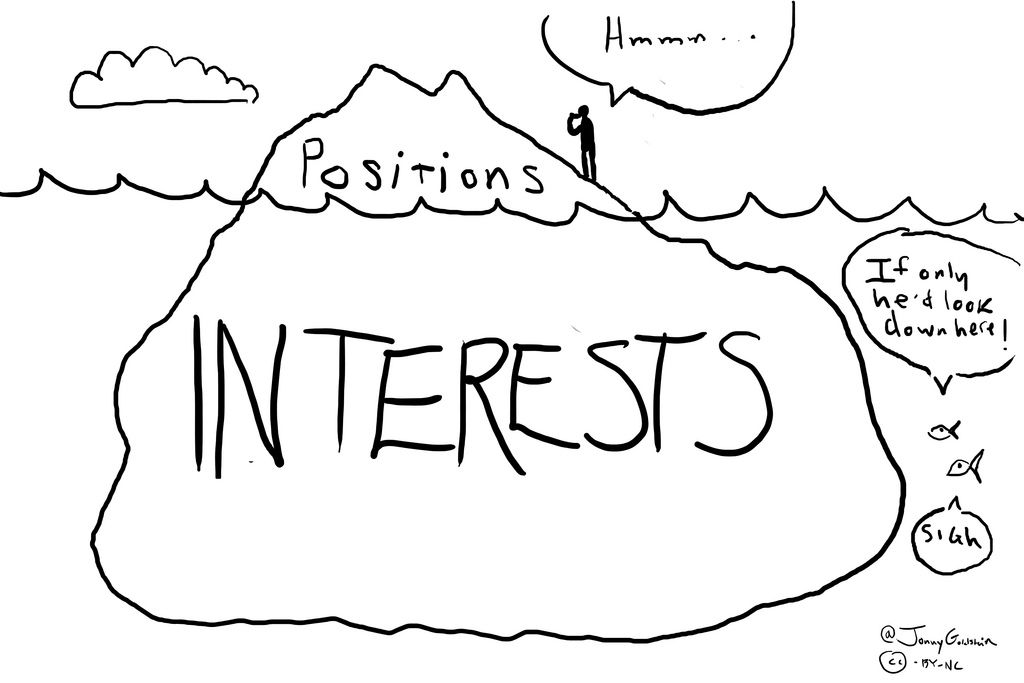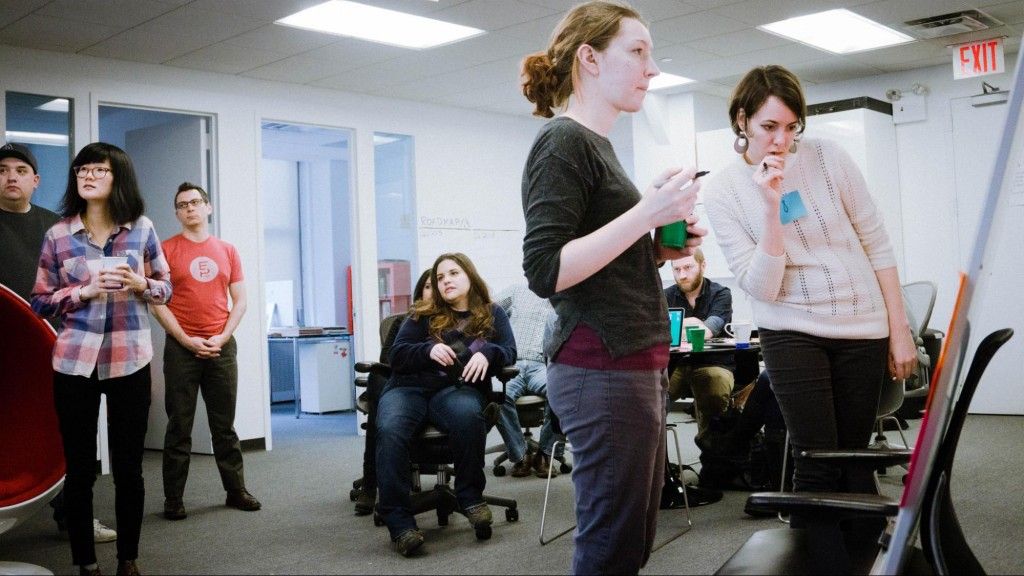The bane of the design world is the multi-opinion, conflicting requests of “design-by-committee.”
UI and UX are not immune to committees. Not the Harry Potters locked in the cupboard under the stairs, UI and UX designers must learn that experience creating for users starts with experience with the decision makers.
In this piece, we’ll teach you survival tactics for fighting the good fight without alienating your team.
Know Your Elevator Pitch
“The Elevator Pitch” forces you to communicate your value to someone in under 60 seconds (sometimes even 30).
Practice crafting your own.

Photo credit: craftivist collective. Creative Commons.
Do you shy away from really building yourself up in the eyes of the person to whom you are speaking? Are you selling yourself? Even at a staff position in a large company, you need to sell yourself to coworkers. A large staff is like a pack of animals, tied together by one common purpose that doesn’t involve bringing down a water buffalo.
- You were hired because someone was impressed by you. They saw your talent, drive and fit within the company culture and team. Don’t doubt yourself!
- The people around you, in non-technical/non-design positions have no idea how to do what you do, or what it is you really do. Smile and let them know what it is you do and by helping them understand, you are making your job own easier.
- Wear your job title like a badge of honor. Beyond just saying, “I’m the UX guy/gal,” try elaborating that you’re “the person who gives the entire website the function and user experience to keep people coming back.” Which statement gives people a stronger understanding of how you improve products?
Talk Around the Conference Table
In any situation, small or large office, freelance or contract, you will run into office politics. Part of that will be people who want to “have fun, too” with building the user experience. They might use subjective words like “happier” and “more fulfilling.”
Be prepared to diplomatically defend the UX decisions you have made.

Source: “Negotiation Cartoons: Positions Vs. Interests” Johnny Goldstein. Creative Commons 2.0.
- You must backup all decisions with facts and figures By creating context with user behavior data and usability testing results, you take design out of the black box. In doing so, you also set a precedent for others to defend their criticisms beyond just personal opinion.
- Don’t be aloof with technical words or people might feel intimidated. Explain the UX and UI in simple, layperson’s terms that relate back to business needs. For example, instead of describing the clean interface of a minimalist layout, explain how the white space emphasizes the CTAs, which may improve conversions.
- Listen to what others are saying and consider the possible merits. Understand the user is the utmost and UX/UI designers might be too close to their design. To help stakeholders clarify their points, we highly suggest the 3 question rule by Dustin Curtis.
Champion UI and UX With Patience
When coworkers don’t understand what you do, you are automatically pushed to the bottom of the corporate ladder. It’s very much like how people perceive the IT department – silent people who appear and fix a computer, then fade away quickly.
“UX”? People either use the website or not. What does user experience have to do with anything? Isn’t that just using the website?

Photo credit: UXPin
- The same goes for UI design. Does it matter where the button is? Why can’t every page just have a button? The simplification of the most complicated part of a website is trivialized. This is where you need to be patient and educate those around you.
- When something is being instituted that will negatively affect the user experience, think about your audience before you let loose. Just like you empathize with users, empathize with your team (especially when you disagree). Saying, “that’s a great suggestion, but in this case, going by a similar experience with another website, we should keep pushing the experience as planned” shows understanding of the suggestion, giving it full consideration but gently turning it down for valid reasons. That’s appreciated in group situations, as well as 1:1 interactions.
- Remind them that YOU are the person to whom they feed all of THEIR information. From wireframing, to user research and testing, measuring user engagement, UI, design and final launch, all the puzzle pieces come to you to put together into a final product
If you’re lucky enough to be part of a tech company, coworkers will understand what you do and your place in the pecking order. Still, expect chaos because that’s the normal order in business and YOU get to tie it all together into one, cohesive website. Don’t just design – start embracing the role of design facilitator.
Involve Others in the Design Process
You don’t design great products by passing the baton from person to the other. Design is a team sport, and collaborative design enriches everyone’s understanding and contribution.
To truly survive design by committee, you need to be proactive and encourage alternative tactics.

Photo credit: “A List Apart big meeting, 30 January 2015.” Jeffrey Zeldman. Creative Commons.
If you want stakeholders to give more valid feedback, teach them how to think like a designer. Like we described in the free e-book Design Collaboration in the Enterprise, involve everyone in the planning, research, design, and testing of your product. As long as the product team has the final say, you reap all the benefits of collaboration without watering down the product through design-by-committee.
- Hold design studio exercises. Set aside an hour and invite all stakeholders to a quick brainstorming session. Clearly state the problem, then give everyone 10-15 minutes to sketch their ideas. When everyone’s done, let each person present and explain their sketches. Finally, let the team vote on the best ideas. More than just exploring ideas, this session also helps you learn more about how each person solves problems.
- Interview stakeholders. Group dynamics can make people act in strange ways. Before you start any design project, speak with each stakeholder 1:1 to let them air out their hopes, goals, and fears for the product. Follow Erika Hall’s excellent guidelines to build long-term rapport and identify potential design issues before they happen.
- Invite others to join your usability testing & research. Nothing beats letting a developer or marketer hear customer feedback firsthand. They’ll internalize and remember the feedback much better, aligning them to user needs without you forcing their hand. Check out Lyft’s design sprint process to learn more.
Conclusion
It’s important in business today, especially the tech field, that well-defined job parameters to keep everyone efficient. This is not to say that parameters can be assigned with each new project (always be flexible!), but when job parameters cross between people, confusion and double-work reigns supreme.
As a design professional, you must be able to assert yourself to keep your seat at the table and because at that year end review, your supervisor will ask YOU why the UX didn’t work. Blaming coworkers for insisting on counter-productive changes, even if true, won’t be acceptable.
Take ownership of the product, know when to stand your ground, and embrace other people’s expertise. Play equal parts designer and moderator, and you’ll be able to dissolve the committee with much less resistance.



